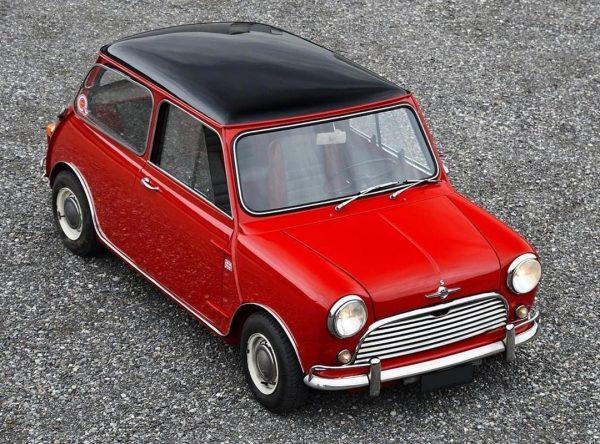It was the year 1964 and the first Mini Cooper 1275 S was built and ready to dominate city and rally roads.
You might not know this about this British made and designed small car. In 1959 after the launch of the basic Mini 850, racing driver John Cooper was convinced that this new small car would make a great race car.
Mini inventor and designer, Alec Issigonis did not agree with Cooper and he blocked Cooper’s plans to produce a racing edition along with a faster road going Mini. Cooper did not give up and thank him for that. Cooper went over Issigonis’ head and got approval from his boss George Harriman to build at least 1000 cars, so the car could get the necessary homologation.
Then in 1961 the Mini Cooper quickly became a legend, but that 1-litre capacity restricted the available power. What was needed was a larger, more powerful engine to make the car truly competitive in motorsport.

They started with a 1,071cc engine and producing 70bhp and was capable of revving to an impressive 7,200rpm. This car comes with a 0-60mph acceleration time of 13 seconds.
Next up was the Cooper S with a 0-60mph acceleration time of just 11.5 seconds and a 98mph top speed that included razor sharp steering and throttle response with on the limit handling like a go-kart for 4 adults.
Then later on the 21st January 1964, the Mini Cooper S won the Monte Carlo Rally for the first time. It was the pairing of Northern Ireland’s Patrick (“Paddy”) Hopkirk and his co-driver Henry Liddon that pulled off the big surprise, resisting the supposed superiority of significantly more powerful rivals in their small British car.

Its faultless run over country roads and mountain passes, ice and snow, tight corners and steep gradients laid the foundations for the underdog-turned-giant-slayer to cement itself in both the hearts of the public and the annals of motor sport legend.
Indeed, the classic Mini’s dominance of the Monte Carlo Rally continued over the years that followed, Hopkirk’s Finnish team-mates Timo Mäkinen and Rauno Aaltonen adding two further overall victories which started in 1965 right up to 1967 to the British manufacturer’s collection.
The triumph of the classic Mini in the Monte was lauded as a sensation by motor sport fans around the world. But this wasn’t a success that came entirely out of the blue: the small car developed by Alec Issigonis, then Deputy Technical Director at the British Motor Corporation, possessed an inherent sporting talent from birth. The first person to spot this potential was John Cooper.
The sports car designer was the driving force behind construction of a more powerful version of the car. The Mini produced only 34hp at launch, but its front-wheel drive, low weight, wide track and comparatively long wheelbase made it an extremely agile four-seater and paved the way for its forays onto race circuits and rally courses.

From 1962 the classic little Mini Cooper and, later, the Mini Cooper S brought home a number of international racing victories, scoring the first win in the Tulip Rally with Pat Moss, the sister of Stirling Moss, at the wheel. It is estimated that the Mini Cooper brought home 153 racing wins in 1962 alone. No other race car has beaten this record till today.
